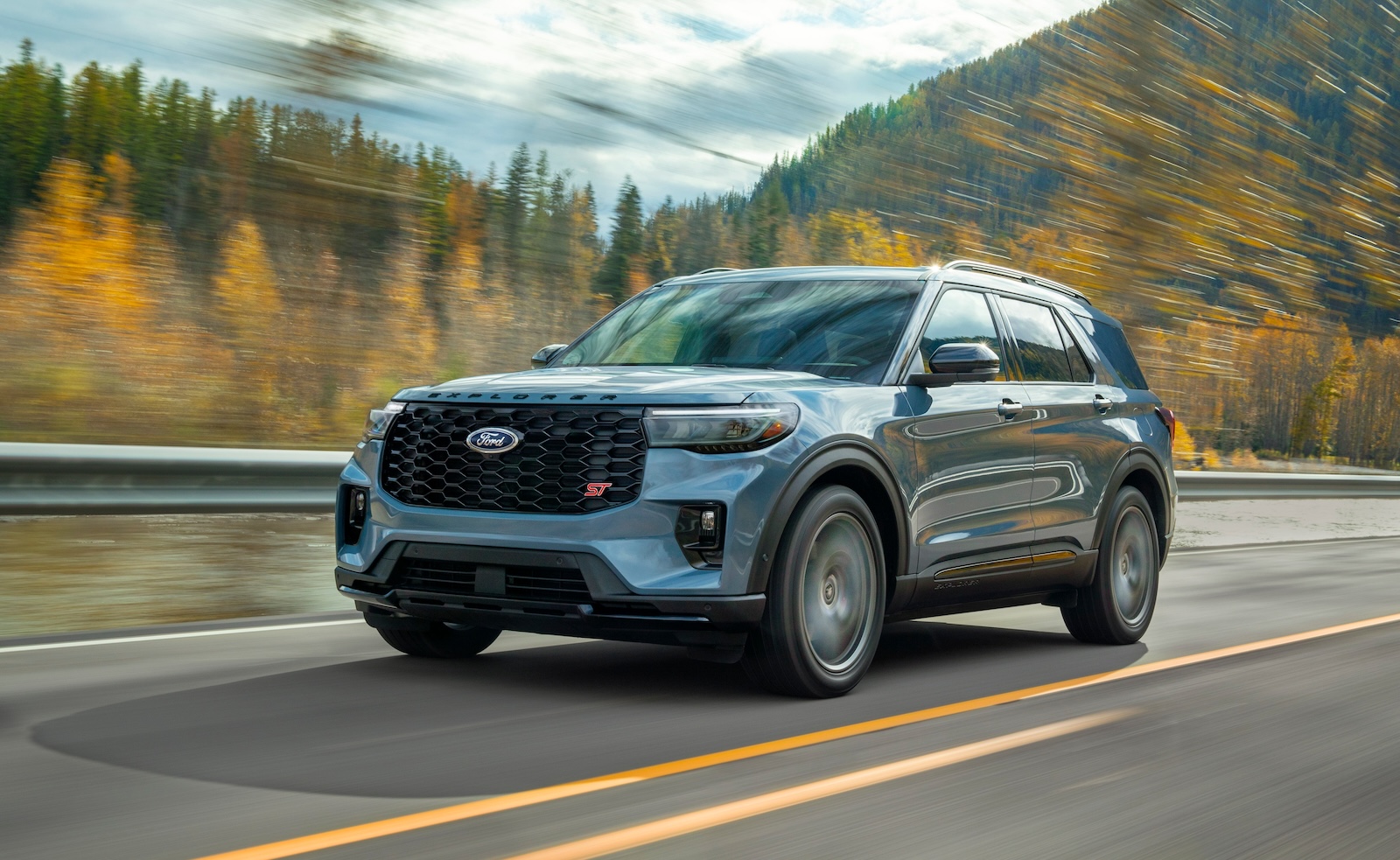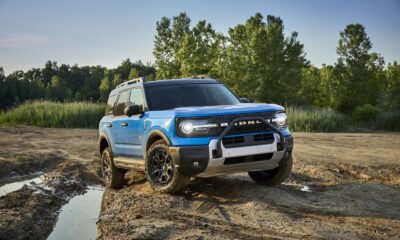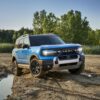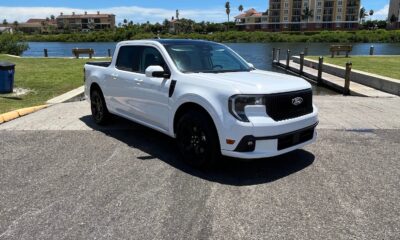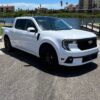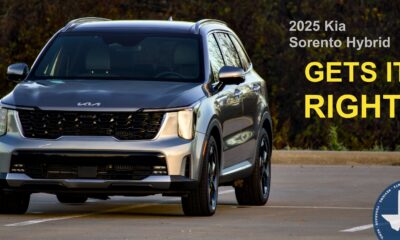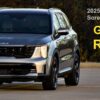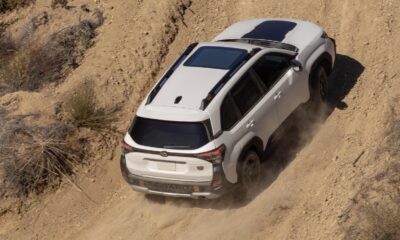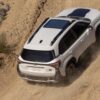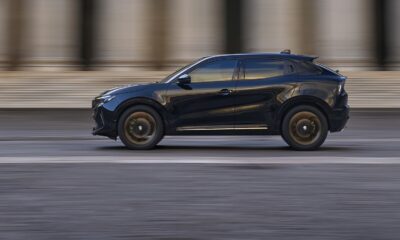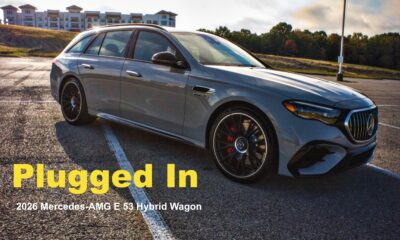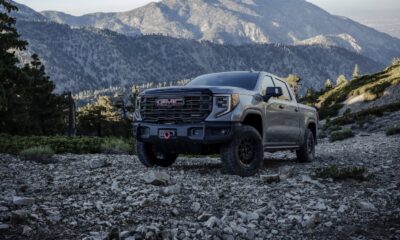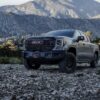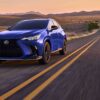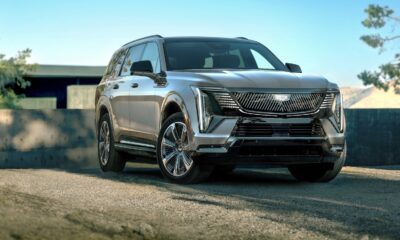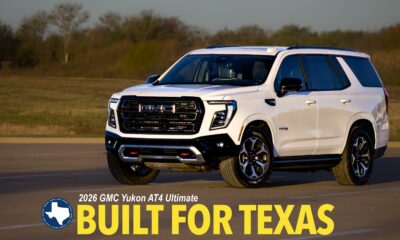Car Reviews
2025 Ford Explorer – VERSATILITY MEETS VALUE
2025 Ford Explorer
VERSATILITY MEETS VALUE
COSSATOT FALLS, Ark. — After a long, hot summer afternoon lazing in Arkansas’ loveliest river’s clear, cool water, the six of us agreed the Explorer was worthy of its name. Three adults, three teens, and an overactive puppy found comfortable spots for the drive home in a midsize SUV that proved competent and comfortable exploring city streets, open highways and mountainous rocky roads.
No wonder the 2025 Ford Explorer continues to be a go-to midsize SUV for families, commuters, and weekend travelers. With seating for up to seven, a wide range of trims, and multiple powertrain options — including a fuel-saving hybrid — it’s built for flexibility without sacrificing comfort or capability.
Whether hauling gear to a Friday night game or navigating a Monday morning school drop-off, the Explorer offers a blend of space, tech, and efficiency that keeps it competitive in a crowded segment.
Trim Levels
Ford offers seven Explorer trims. Here’s a simplified breakdown:
- Base (~$38,000) – Cloth seats, 8-inch touchscreen, manual liftgate, basic driver-assist suite
- XLT (~$40,000) – Upgraded cloth or optional synthetic leather, power driver seat, heated fronts, roof rails
- ST-Line (~$44,000) – Sport styling, 20-inch wheels, larger touchscreen, wireless charging
- Limited (~$47,000) – Leather, ventilated fronts, hands-free liftgate, premium audio
- ST (~$51,000) – Twin-turbo V6 (400 hp), sport-tuned suspension, performance brakes
- Timberline (~$49,000) – Off-road suspension, skid plates, all-terrain tires
- Platinum (~$56,000) – Real wood trim, massaging seats, 12-speaker B&O, adaptive headlights
We think the ST-Line offers the best value with a rich lineup of features and upscale trim. The Limited Hybrid strikes a strong balance for fuel-conscious buyers who still want premium features.
Driving Experience
The Explorer’s base 2.3L turbo delivers solid acceleration and decent fuel economy. The ST’s twin-turbo V6 adds serious punch, while the hybrid V6 offers smooth power delivery and better mileage.
Ride quality is firm but composed, with confident handling for a sizeable vehicle. In the mild off-road setting, the Explorer is exceptionally composed. We goosed the throttle on a gravel section, seeing if we could break it loose, but we only got a slight sashay of the rear before stability control kicked in.
The Timberline adds light off-road chops, though most Explorers are tuned for pavement.
How It Stacks Up
Through mid-2025, midsize SUVs account for roughly 15% of all U.S. new-vehicle sales, making them the second-most popular segment. The Explorer remains a volume leader (88,807 YTD), but faces strong pushes from Jeep Grand Cherokee, Honda Pilot, Hyundai Palisade, Kia Telluride, and Toyota Highlander — each carving out loyal followings with distinct strengths.
Hyundai and Kia have grown their share on the strength of value-packed, upscale interiors, while Toyota continues to dominate hybrid sales.
- Toyota Highlander / Highlander Hybrid – Smoother ride and class-leading hybrid MPG (up to 36 mpg), but a tighter third row and lower towing capacity than Explorer.
- Hyundai Palisade – Plush, near-luxury cabin and quiet ride; slightly less fuel-efficient and no hybrid option, but substantial value in mid-trims.
- Mazda CX-90 – Sport-sedan handling and luxury-grade interior; standard AWD, but less third-row space and lower max tow rating on most trims.
- Kia Telluride – Spacious, upscale interior with generous standard features; ride comfort rivals Palisade, but fuel economy lags, and no electrified powertrain.
- Honda Pilot – Refined cabin and smooth V6, but no hybrid option.
- Chevy Traverse – More cargo space than Explorer, but thirstier and less agile.
Cabin & Tech
Inside, the Explorer offers a clean layout with intuitive controls. Materials improve as you climb trims, with stitched surfaces and ambient lighting in higher models.
Highlights:
- Seating for 6–7
- Up to 87.8 cu ft cargo space
- 13.2″ touchscreen with wireless Apple CarPlay/Android Auto
- OTA software updates
- Available massaging seats and premium audio
Driver-assist tech is standard: adaptive cruise, lane-keeping, blind-spot monitoring, and automatic emergency braking.
Our tester came with Ford’s Level 2 autonomous hands-free driving system. It works on pre-mapped highways and uses cameras and radar to monitor driver attention and maintain safe navigation. It did not work well on Arkansas highways, but a feature that adjusts cruise control to changes in speed limits helped avoid small-town speed traps.
Compared to Highlander and Pilot, Explorer’s tech feels more current, though Toyota’s interface remains slightly more intuitive.
Safety
Top marks from NHTSA and IIHS, with strong crash scores and a full suite of safety features. Options like evasive steering assist and surround-view cameras add peace of mind.
Fuel Economy & Costs (15,000 mi/year @ $2.75/gal)
- 2.3L Turbo I-4 (24 mpg) → ~$1,720/year
- 3.0L Twin-Turbo V6 (20 mpg) → ~$2,060/year
- Hybrid V6 (27 mpg) → ~$1,530/year
- Highlander Hybrid still leads with ~$1,150/year at 36 mpg.
Consumer Reports notes, “Ford’s hybrid option helps offset rising fuel costs without sacrificing performance.”
Midsize SUV Market SnapshotAs noted earlier, through mid-2025 midsize SUVs account for roughly 15% of all U.S. new-vehicle sales, making them the second-most popular segment. The Explorer remains a volume leader (88,807 YTD), but faces strong pushes from Jeep Grand Cherokee, Honda Pilot, Hyundai Palisade, Kia Telluride, and Toyota Highlander — each carving out loyal followings with distinct strengths. Hyundai and Kia have grown their share on the strength of value-packed, upscale interiors, while Toyota continues to dominate hybrid sales.
2025 U.S. Midsize SUV Market Share (YTD) According to GoodcarBadcar, here is how the market niche looks today:
Car and Driver says, “The Explorer remains a jack-of-all-trades, even if it’s no longer the class leader.
Final Take
The 2025 Ford Explorer offers a flexible lineup with solid tech, strong safety, and respectable fuel economy — especially in hybrid form. It’s a wise choice for families who want space and options without jumping to a full-size SUV.



